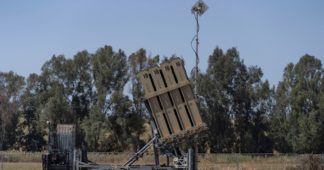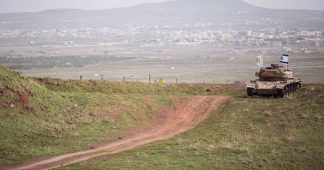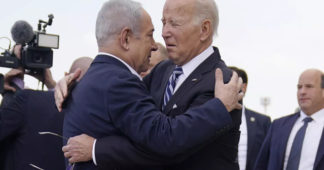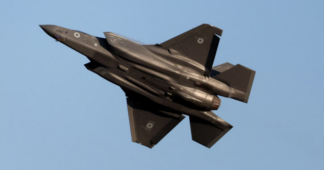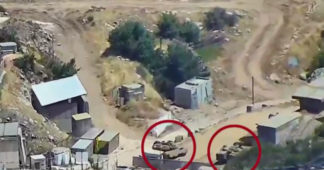Jul 30, 2024
On Saturday, an explosive fell onto a sports field in Majdal Shams in Israeli-occupied Golan Heights, killing 12 children. Israel blamed the Lebanese Shia movement Hezbollah. The group has denied the accusation.
Veteran war correspondent Elijah Magnier told Sputnik on Monday that what little information is available on the Golan Heights explosion that killed 12 Arab Druze Muslim children contradicts the official story offered by the Israeli government.
“First, [Israel has] refused any Western investigation by Israeli allies. So they don’t want anyone to investigate the type of rockets and/or the debris,” Magnier explained. “And the technical details of the explosions are very telling. The Falaq rocket that Hezbollah fires is a 50 kilogram explosive. Now, a warhead with such a quantity of explosive doesn’t leave the damage that was left by the explosion that happened in Golan Heights, [it would be] much bigger.”
Magnier, who has over 35 years of experience covering conflicts in Iran, Lebanon, Syria, Iraq, Libya, Sudan, Afghanistan and Yugoslavia, says that the evidence the Israelis have provided has been unconvincing.
“We have not seen any picture… of the guidance system, or any component that [we] need to understand what kind of rocket [or missile] that exploded in this place,” Magnier began. “They showed us two pieces with serial numbers that match the Falaq, but not on the same scene of the explosion. They’re completely different on a white plank. So, we don’t know where these pieces were taken from.”
“Normally, when the forensic team is on the scene, [they] take hundreds of photographs with every single piece before they touch anything. We haven’t seen all that, but we’ve seen a rush of accusing Hezbollah,” Magnier added.
Images taken from civilians on the scene show a small crater on the edge of a football field, next to a partially destroyed fence.
“The diameter of the crater [from a Hezbollah Falaq rocket] can [be] between four to six meters and the depth can be… between 1.5 to 3 meters, which is not the case at all of the explosion we’ve seen,” Magnier described. “We’ve seen in this explosion only a small part of the fence [was] damaged and the other part of the fence is still intact. So, even the fragment of the explosion is different. The shrapnel is different.”
On Sunday, Israel bombed 12 settlements in Lebanon after saying that Hezbollah had crossed a “red line” in the attack. Hezbollah has vehemently denied it was involved. Magnier pointed out that they do not have a reason to attack Druze Muslims in Golan Heights, which is illegally occupied by Israel but still contains a large Muslim population.
“Hezbollah has thousands of civilian objectives [it could hit] that are close to the borders of Lebanon, and it can really destroy any village or any Israeli occupied city without the need to go to another village that is occupied by Druze Muslims who have [influence] in Syria and Lebanon and want to declare their support to the Palestinians,” argued Magnier, who added that Hezbollah has not been hitting civilian targets since it started shelling Israel in solidarity with the Palestinians in Gaza.
Magnier argued that a faulty Israeli air defense missile was a more likely culprit in the Golan Heights explosion.
“I can say that there are malfunctioning missiles and there are malfunctioning rockets that can fall anywhere and these incidents are very frequent, in particular with the Israeli interception missiles, where they say that only 60 to 65% reach their target and the others miss,” he said. “A strong possibility… an Israeli interception missile of the type Tamir… they carry around 10 to 15 kilograms of explosive and they have a very similar impact to what we’ve seen in the pictures provided on the ground by the people of Majdal Shams in the Golan Heights.”
Magnier noted that the size of the crater matched what the Tamir could create and that there was still grass from the field around the crater, which would not happen with a larger Falaq rocket.
“Everything there indicates that we’re talking about a small-sized missile [and] not a big sized rocket of 50 kilograms.”
On Monday, US and Israeli media reported that an Israeli official said its response was still coming and that it would be “limited but significant” in order to avoid an all-out war.
“So, we understand that Netanyahu is really trying to avoid being involved in a war that he doesn’t know what the consequences would be. He can start, but he can’t end it,” concluded Magnier. “What is the ultimate objective [in attacking Hezbollah]? Destroy Lebanon? Destroy the airport? He will have his airport destroyed. Attack the Capital? He will have Tel Aviv destroyed. So this is where we see that things are not as smooth as the Israelis are trying to show.”
We remind our readers that publication of articles on our site does not mean that we agree with what is written. Our policy is to publish anything which we consider of interest, so as to assist our readers in forming their opinions. Sometimes we even publish articles with which we totally disagree, since we believe it is important for our readers to be informed on as wide a spectrum of views as possible.
